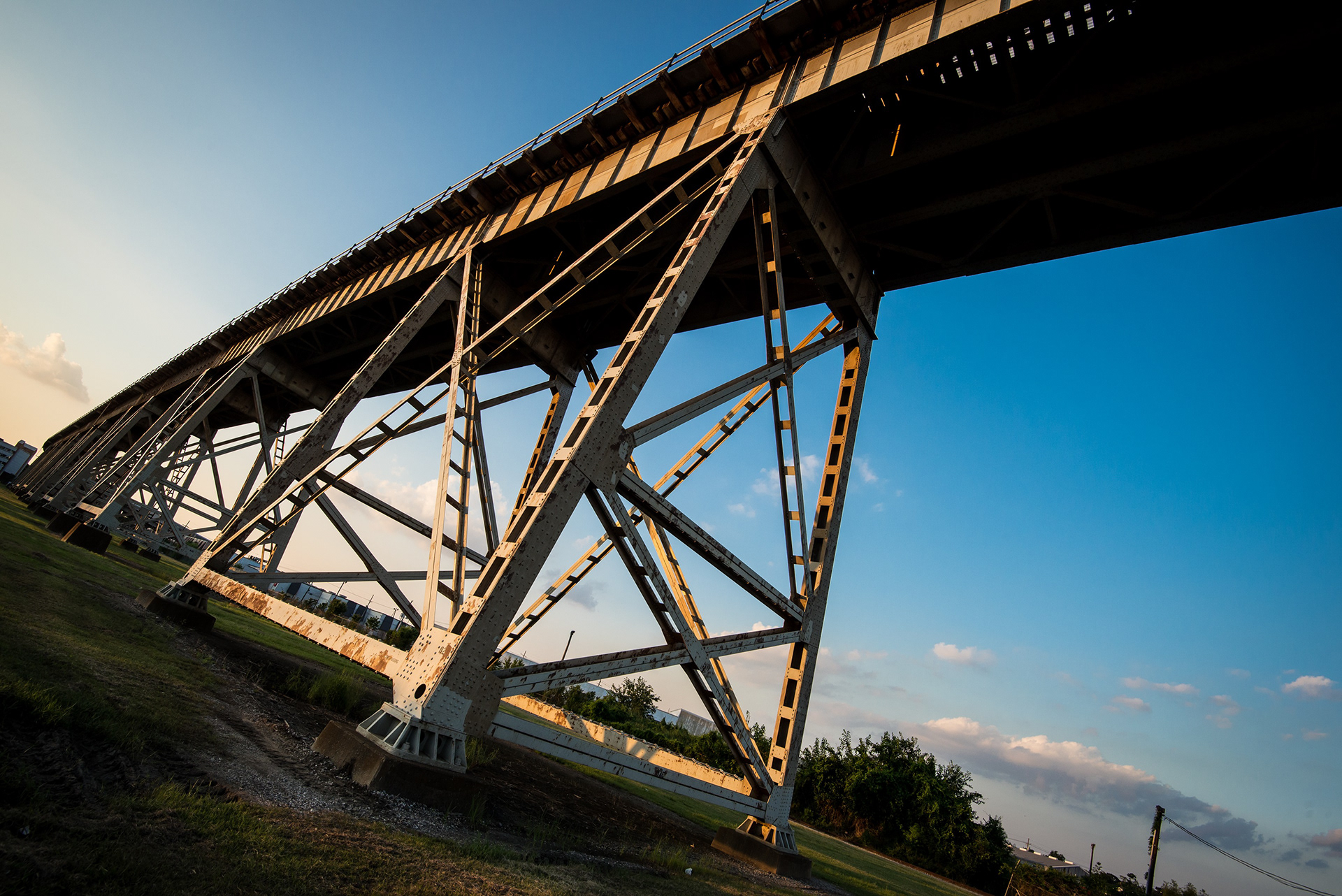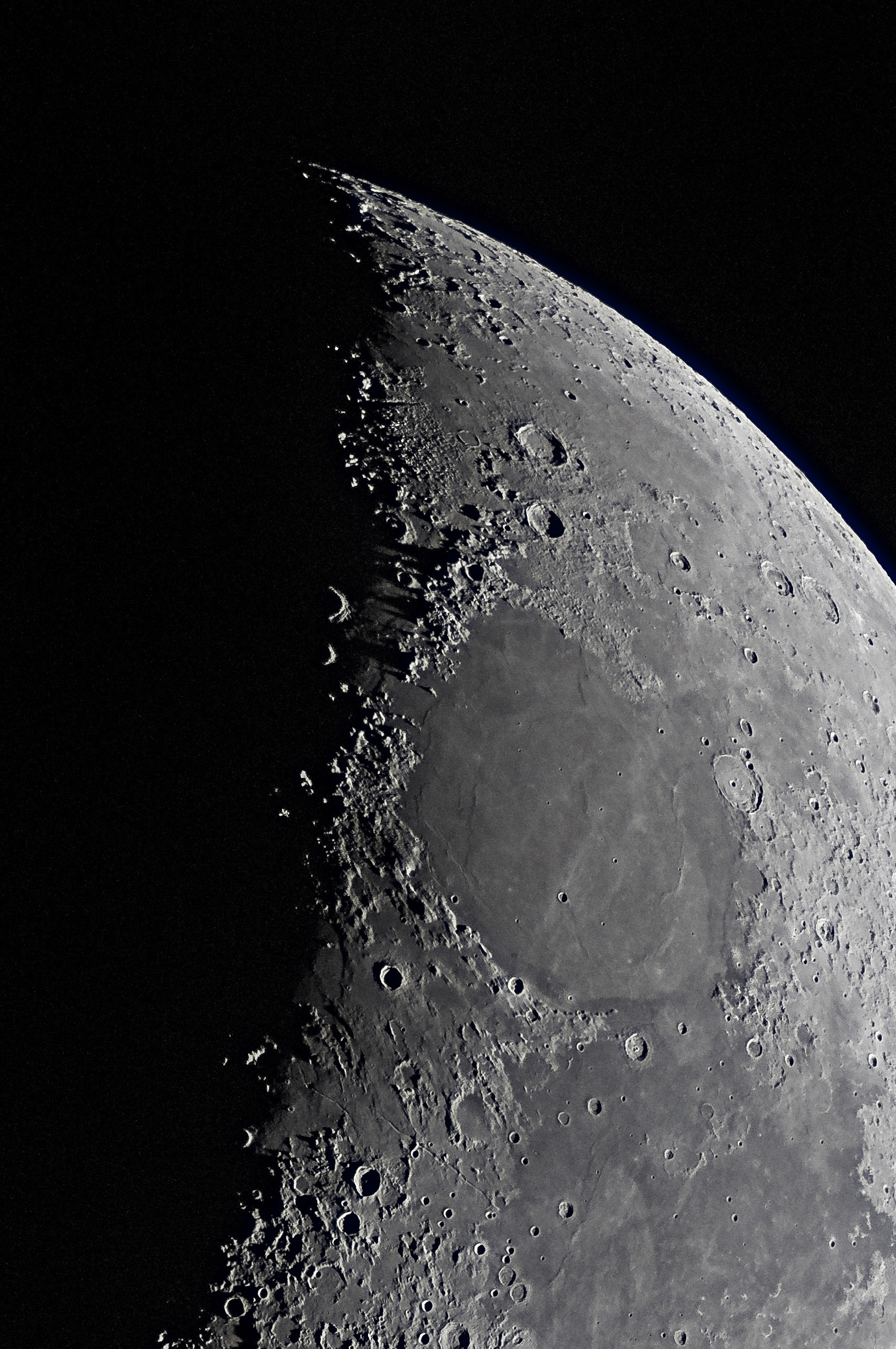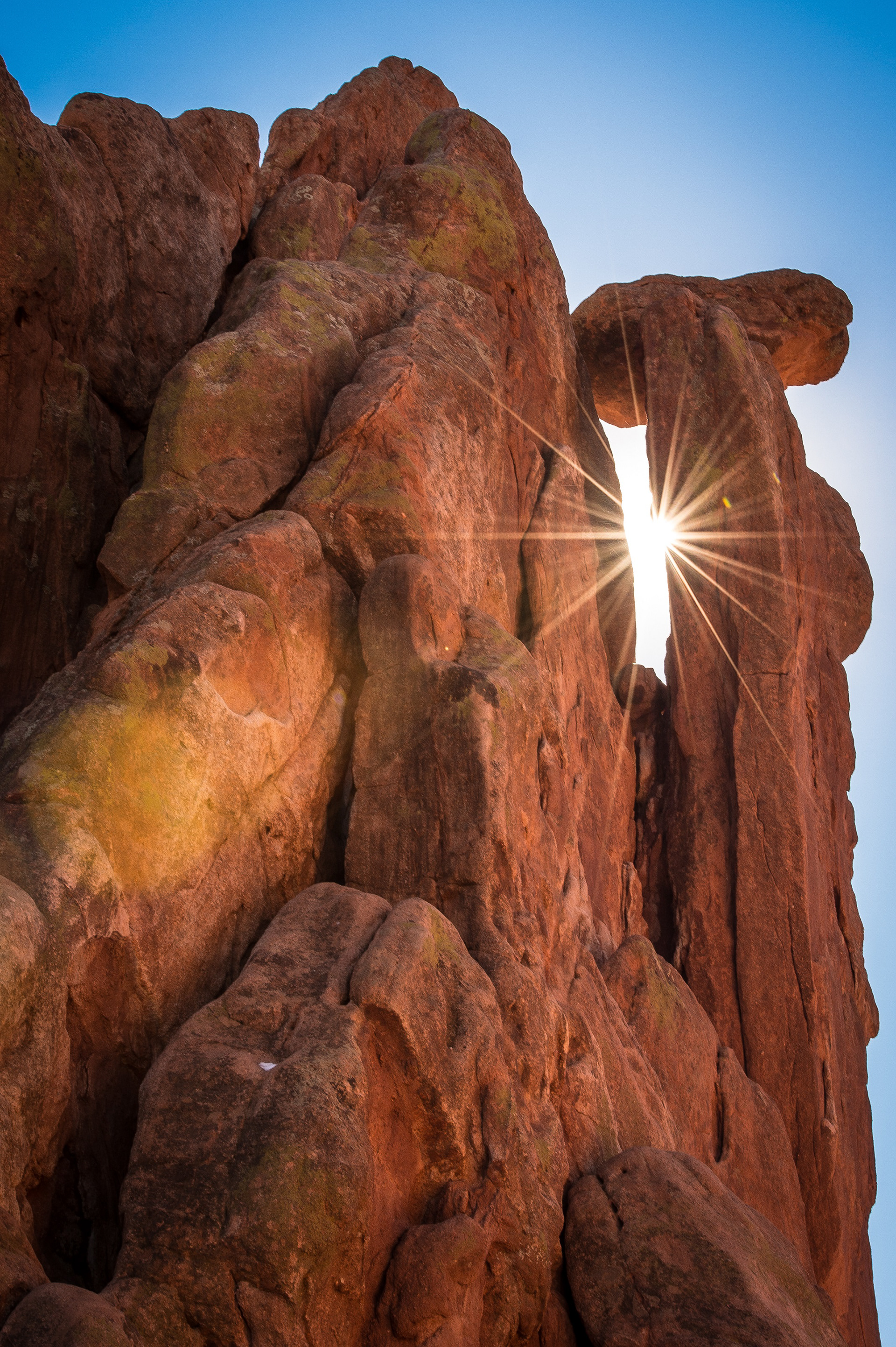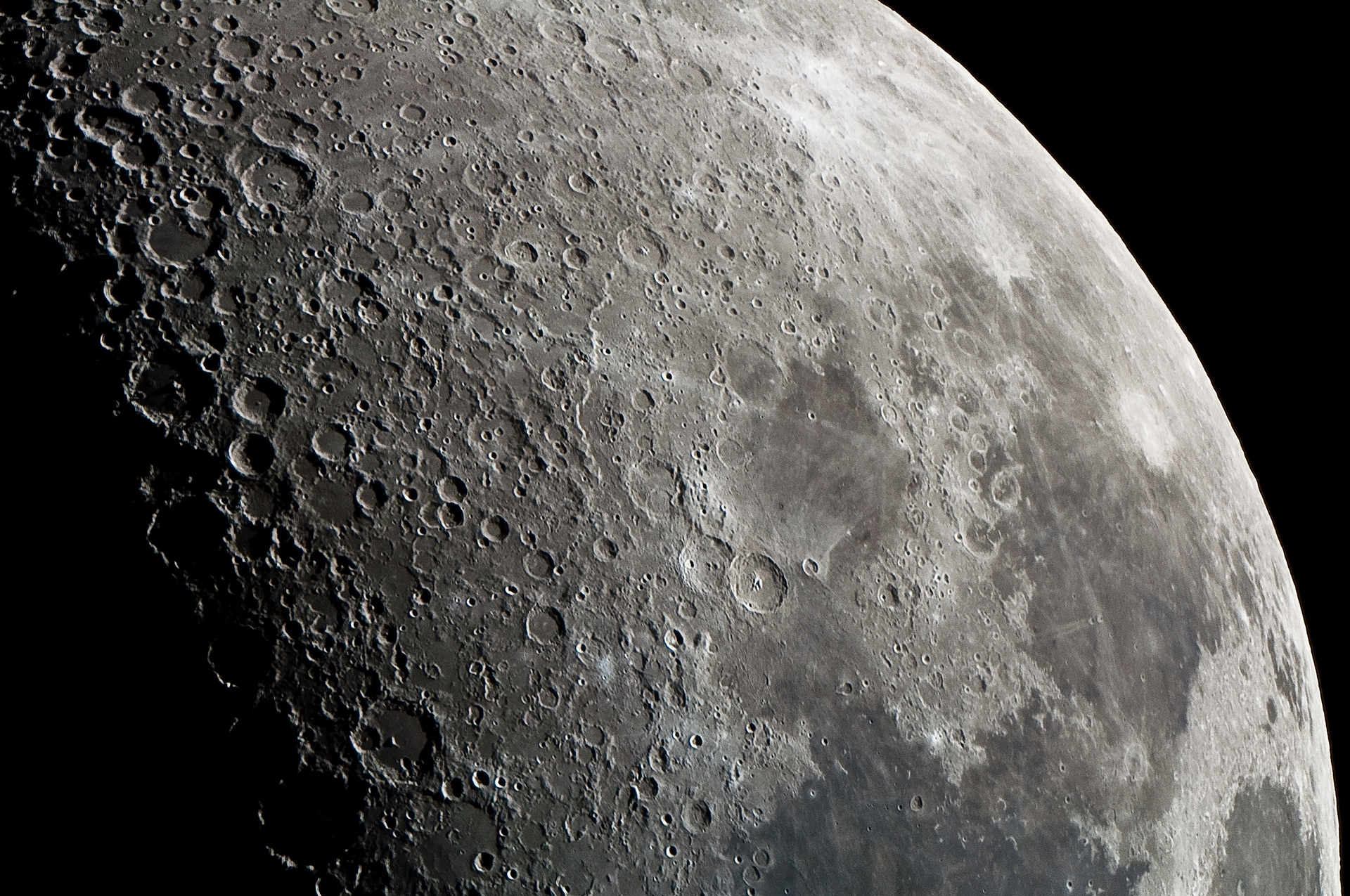
Northern Lunar Pole, Seas of Cold, Serenity, and Tranquility The smooth patch of mare in shadow just below the Northern Pole is the Alpine Valley, which leads eastward (right) into the highest-latitude region of lunar basalts, the Sea of Cold. Just to the south, two large craters, Aristotle (top) and Eudoxus, blemish the landscape vertically . To their west, (left) the Alps Mountains follow downward along the day/night line, or terminator. Moving southward along the terminator leads to the Caucasus Mountains that border the upper rim of the Sea of Serenity. The range casts long shadows westward into the the Sea of Rains, which is almost entirely in shadow. Continuing down along the terminator, the Aristillus and Autolycus craters are in half-shadow. Just below them, the Apennine Mountains emerge from the terminator and border the western edge of the Sea of Serinity.

Mare Imbrium (Sea of Rains) - With a diameter of over 1100 km, the Sea of Rains is the Moon’s largest impact basin and the second largest among lunar maria. Its formation followed a cataclysmic impact from the Late Heavy Bombardment roughly 4 billion years ago. Radioisotopic dating put its age between 3.7 and 3.9 billion years. Bordering Mare Imbrium are concentric mountain ranges reaching up to 7 km high, which are material excavated from the original impact. The basin’s northern region is confined by the Jura-Gebirge Mountains, which are divided by the 110 km-wide Plato Crater. The Alps (lunar, not French) trace along the northeastern border, and come to an end angling southward. Between the Seas of Rains and Serenity (far right of center), the Caucasus Mountain range leads into an open patch of mare that joins the two seas. 60 km due south, the vast Appenine mountains extend downward to the basin’s southern edge. The large eye-catching crater south of Mare Imbrium is Copernicus, named after the 15th/16th century Polish astronomer, who revolutionized our solar system’s paradigm by placing the Sun at its center.

















